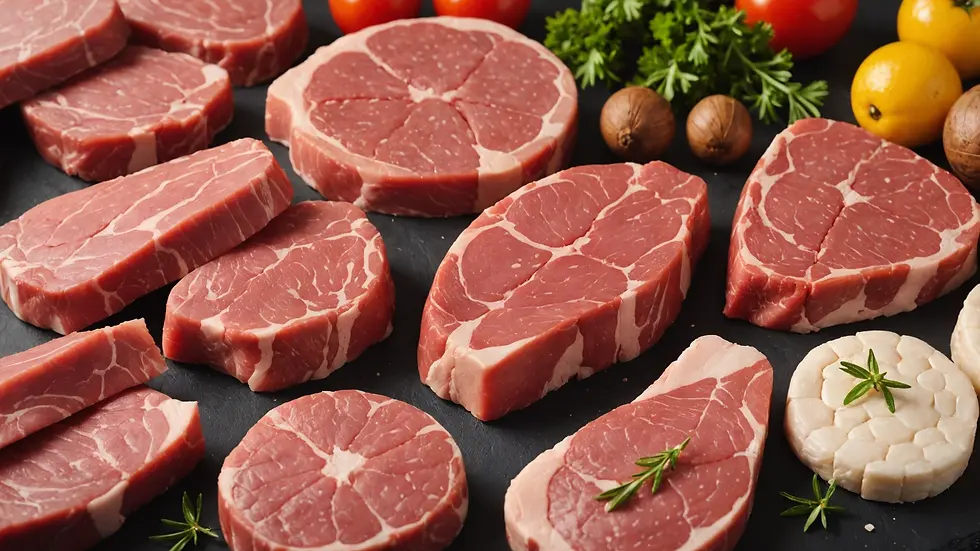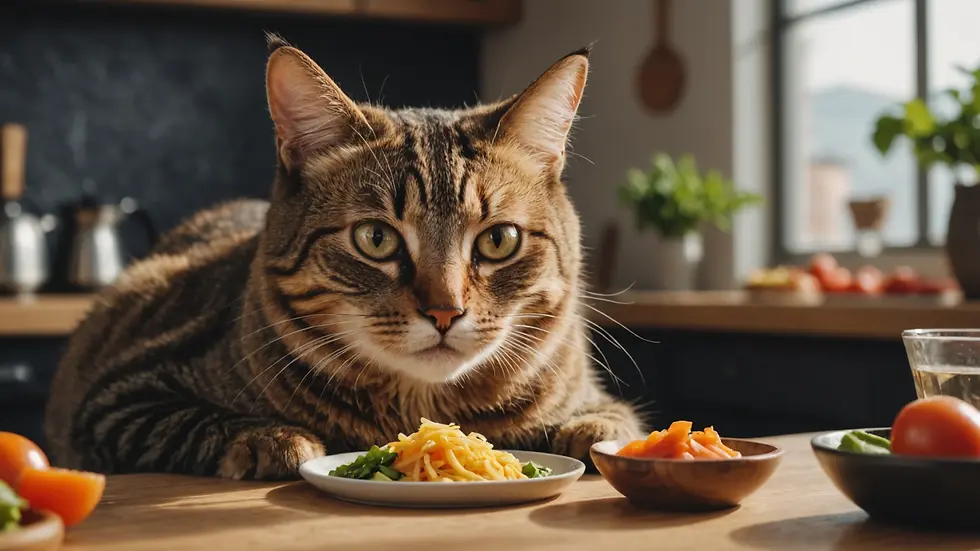The Science Behind Raw Diets for Cats: Separating Fact from Fiction
- Jyotiraj Borah
- Feb 8
- 4 min read
Cats are fascinating creatures, capturing the hearts of many with their independence and playful personalities. However, when it comes to their diet, pet owners often face a maze of information about raw diets. More than ever, interest in these diets has surged because they promise numerous health benefits. But what does the science say? In this article, we will explore the facts and myths surrounding raw diets for cats, enabling you to make well-informed decisions for your furry friend.
Understanding the Raw Diet Concept
The raw diet for cats, frequently known as a "BARF" diet (Biologically Appropriate Raw Food), emphasizes feeding cats primarily raw animal products. This includes items like muscle meat, organ meats, and bones, with some advocates even suggesting the addition of fruits and vegetables. Supporters believe this approach mirrors the diet of wild cats, which could lead to better health outcomes.
Some proponents claim benefits such as improved coat condition, less incidence of allergies, and elevated energy levels. For example, studies have indicated that cats on raw diets can show a 30% improvement in coat shine. However, it's crucial to approach these claims with a discerning eye and rely on scientific insights.
Nutritional Needs of Cats
What's in Cat Food?
Commercial cat food is carefully formulated to meet the guidelines of the Association of American Feed Control Officials (AAFCO). These regulations ensure that cat food is rich in essential nutrients, including proteins, vitamins, and minerals crucial for a cat's overall health.
Unique Needs of Obligate Carnivores
As obligate carnivores, cats thrive primarily on animal-based nutrients. Unlike dogs, cats cannot produce vital nutrients, such as taurine, arachidonic acid, and vitamin A, from plant-based sources. Ignoring these facts can lead to serious health issues, highlighting the need for a well-balanced diet tailored to a cat’s specific biological requirements.
Benefits of a Raw Diet
Potential Health Improvements
Supporters of raw diets suggest several persuasive benefits:
Improved Dental Health: Chewing on raw bones can naturally clean a cat's teeth, promoting better dental hygiene. Studies have shown that cats fed raw bones can experience a 40% reduction in plaque buildup.
Shinier Coats: Many cat owners report that their pets have glossier fur after transitioning to a raw diet. This improvement may be due to the healthy fats found in raw meat.
Increased Energy Levels: Some pet owners observe that their cats are more energetic and playful after making the switch to raw food.
Weight Management: A raw diet typically has more protein and fewer carbohydrates compared to dry kibble. For example, a raw chicken diet can contain about 60% protein, while many commercial dry foods hover around 30%.
Enhanced Digestion
Some cats may find raw diets easier to digest. The belief is that whole, unprocessed foods align better with a cat's natural digestive system, leading to fewer instances of vomiting or gastrointestinal distress.
The Risks of a Raw Diet
Nutritional Imbalances
Transitioning to a raw diet poses the risk of nutritional imbalances, as cats require specific nutrient ratios. Omitting necessary components, like organ meats, could lead to deficiencies including impaired vision and heart problems.
Pathogen Concerns
Raw meat can harbor harmful bacteria like Salmonella and E. coli. While cats have stronger stomachs than humans, improper handling and preparation can still result in illness. It's reported that about 3% of raw cat food samples may test positive for harmful bacteria.
Potential for Bone Hazards
Feeding whole bones presents risks, such as fractures or blockages in the gastrointestinal tract. Certain bones can splinter and cause severe complications. Careful selection of safe bones is essential.

Proper Preparation and Safety
Sourcing Raw Ingredients
If considering a raw diet for your cat, prioritize high-quality ingredients. Choose fresh, human-grade meats sourced from reputable suppliers. Pay attention to the labeling to ensure the meat's quality.
Handling Raw Food Safely
Safety is paramount when dealing with raw food. Wash your hands, utensils, and surfaces thoroughly after handling raw meats to prevent cross-contamination.
Balanced Recipes
Consult with a veterinarian or a pet nutritionist to create a balanced raw diet that meets your cat's unique needs. Online resources and books on feline nutrition can provide additional guidance.
Transitioning to a Raw Diet
Gradual Process
Changing from commercial food to a raw diet should be a gradual process. Start by mixing a small portion of raw food with their regular food, and then increase the raw percentage each day or week.
Monitoring Your Cat's Health
During the transition, closely observe your cat's health. Look for indicators of digestive issues or behavioral changes. If any problems arise, consult your veterinarian immediately.
Myths and Misunderstandings
Myth: Cats will only eat raw food if it's formulated that way
While many cats will adapt to raw food, others may need time to adjust. Individual preferences and past experiences with food play a significant role in their willingness to accept a raw diet.
Myth: Raw diets are inherently better than commercial diets
It's a common misconception that raw diets are automatically superior. While some cats thrive on raw diets, others do better on high-quality commercial cat food tailored to meet their specific nutritional needs.
Myth: All raw diets are safe
Not every raw diet is created equal. Some may lack essential nutrients or involve unsafe food-handling practices. Conducting thorough research and consulting experts is essential before deciding on a raw diet.
Making the Right Choice for Your Cat
Exploring feline nutrition can be complex, especially when considering raw diets. While there are some promising benefits associated with raw feeding, it is vital to weigh these against the potential risks and nutritional needs of your cat.
Veterinary research continues to inform pet owners about healthy dietary practices for their cats. Whether you choose to implement a raw diet or remain with a high-quality commercial option, ensuring balanced nutrition remains the priority.
Before implementing significant dietary changes, consult your veterinarian to make responsible, informed choices. Understanding feline nutrition empowers you to provide the healthiest and happiest life for your beloved pet.

With careful consideration and a commitment to your cat's health, you can navigate the raw diet landscape effectively, ensuring your feline companion thrives.




Comments